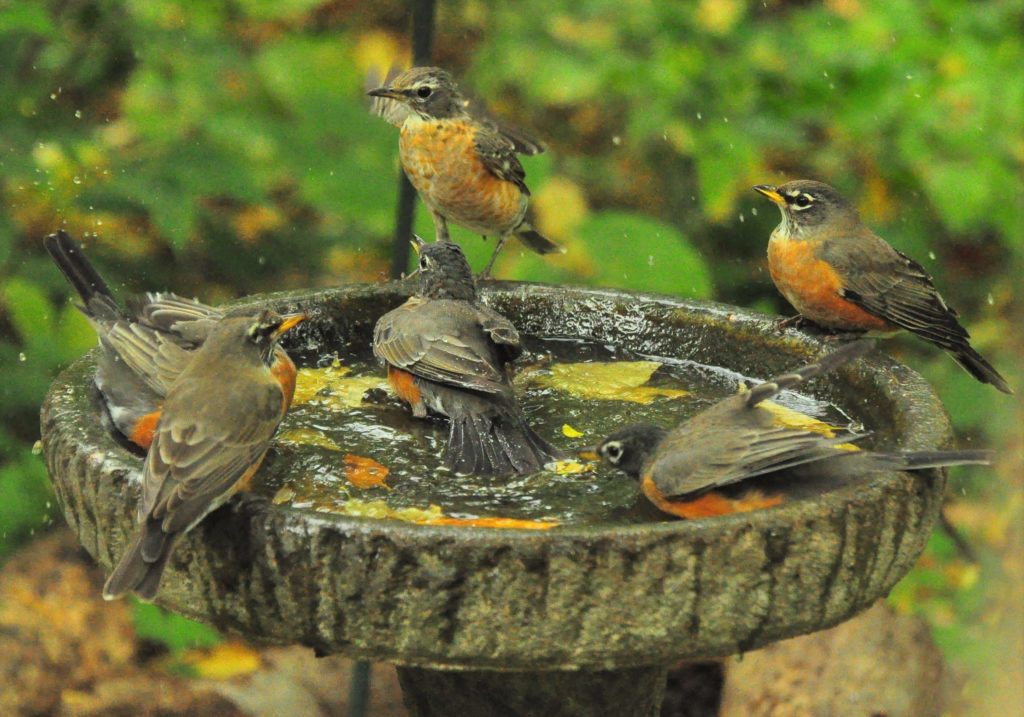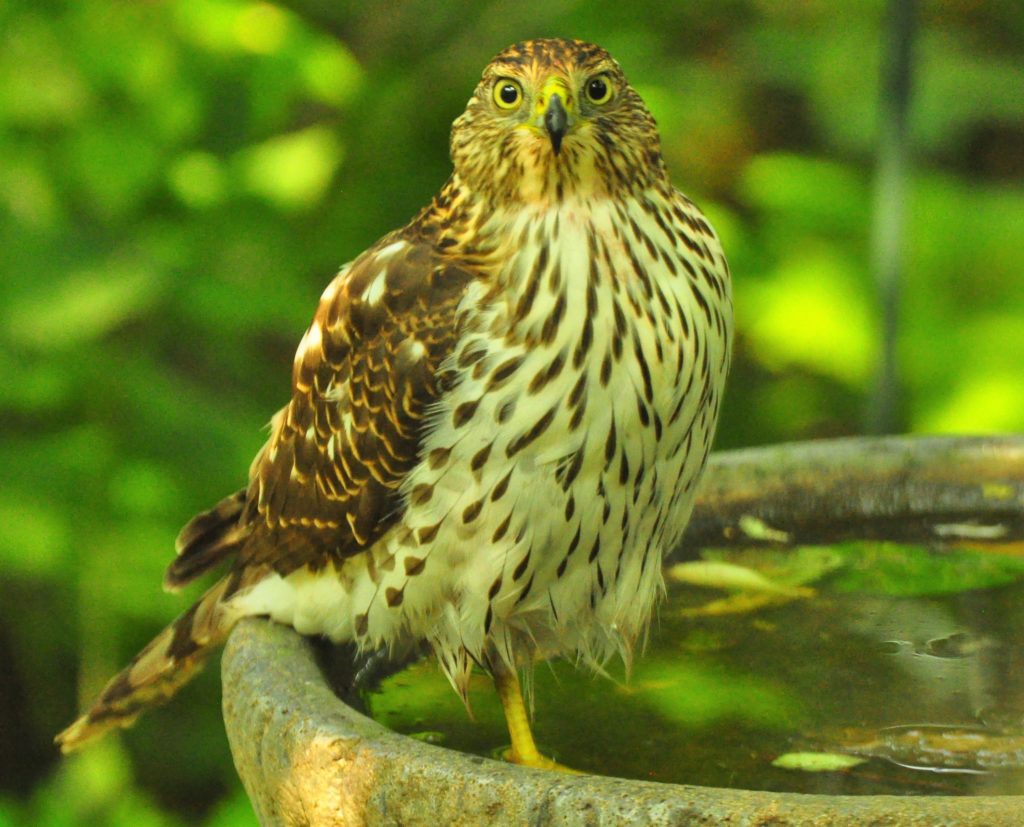Photography courtesy of Lowell Washburn, all rights reserved.
Bird baths are an important component of successful backyard bird feeding. During the heat of summer, the benefits of providing a cool drink or clean water for bathing are more than obvious. In some cases, water can draw as many birds as the feeders themselves.

But now that summer has passed and the weather is cooling, many people are tempted to put baths into winter storage. This would be a mistake. Whether the birds are year-round residents or wing weary migrants, water remains an essential ingredient to survival – all twelve months of the year. The large flocks of northern robins currently migrating through Iowa provide a good example. During the warm weather months, robins are able to obtain much of the moisture they require from foods such as earthworms and insects. But during fall migration, their diets switch from plump nightcrawlers to things like seeds and dried berries which soon results in thirsty travelers. For October migrants, finding water may prove as critical as finding food.

At many locations, bird baths are never busier than during the fall. The variety can be impressive – everything from jays and warblers to waxwings and finches. Some of our feathered visitors may even lean toward the exotic. A couple of days ago, I was treated to the sight of a beautiful Cooper’s hawk using a bath previously occupied by several migrating robins. Once the bath was complete, the contented raptor – an immature female — spent the next half hour enjoying the fall weather while soaking her feet. Other birds were noticeably absent during the hawk’s visit.
Once the Cooper’s plumage had dried, she quickly took wing and disappeared into the woods. Within minutes, normal activity resumed as warblers, robins, woodpeckers, and a single blue jay returned to the bath.

 Tom Cope
Tom Cope Sue Wilkinson
Sue Wilkinson Susan Judkins Josten
Susan Judkins Josten Rudi Roeslein
Rudi Roeslein Elyssa McFarland
Elyssa McFarland Mark Langgin
Mark Langgin Adam Janke
Adam Janke Joe Henry
Joe Henry Kristin Ashenbrenner
Kristin Ashenbrenner Joe Wilkinson
Joe Wilkinson Dr. Tammy Mildenstein
Dr. Tammy Mildenstein Sean McMahon
Sean McMahon